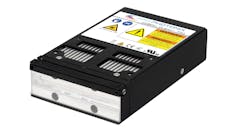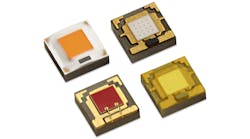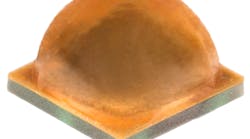Let's start in the packaged LED area and focus on the new Luxeon T family from Philips Lumileds. While the branding may make it seem to be just an evolutionary new Luxeon family member, Lumileds sees the product as its new flagship high-power LED. It will target indoor applications with a minimum CRI of 80 and optional CRI as high as 95. Lumileds said it is manufacturing the LEDs with its latest epitaxial recipe that delivers blue emitters within a 1- to 2-step MacAdam ellipse. That means that the company can supply packaged LEDs within a 3-step ellipse at a typical operating temperature of 85 degrees C. The new epitaxy technology, chip architecture, packaging, and phosphor combine to deliver 140 lm/W in cool white LEDs, and 125 lm/W at 3000 kelvin, with 350 milli amp drive current. The LEDs are specifically applicable to directional applications including downlights, and PAR and MR16 directional lamps.
Meanwhile, the Philips Lighting business made news as well with the launch of new A19 retrofit lamps that apparently eschew remote phosphor for what the company said is a more aesthetic white look that's more like traditional incandescent lamps.
Remote phosphor has been a key technology in Philips' ability to deliver higher-efficacy lamps, including the L Prize winning lamp and the EnduraLED family with 60W, 75W, and most recently 100W equivalent lamps. Philips may have faced some market resistance to the yellow and orange tinted remote phosphor lamps, and says that the new lamps are suitable for use in open fixtures. The surprising part of the announcement is that the new 11W lamps deliver 830 lumens, 25% more than the 12.5W EnduraLED product.
The new Department of Energy Caliper report tested 38 LED PAR38 lamps that offered equivalence to 40W to 90W halogen lamps. The latest directional LED lamps tested very well in terms of efficacy and beam control, although the report noted the need for more options in light output and beam pattern.
There has been a lot of business news dominated by Siemens and its Osram unit. After shelving a planned Osram initial public offering, Siemens will now spin out Osram shares to Siemens shareholders while retaining almost a 20% stake. Osram, meanwhile, will cut significant jobs but boost its investment in LED technology. We also saw yet another acquisition in the test space with Konica Minolta acquiring Instrument Systems.




